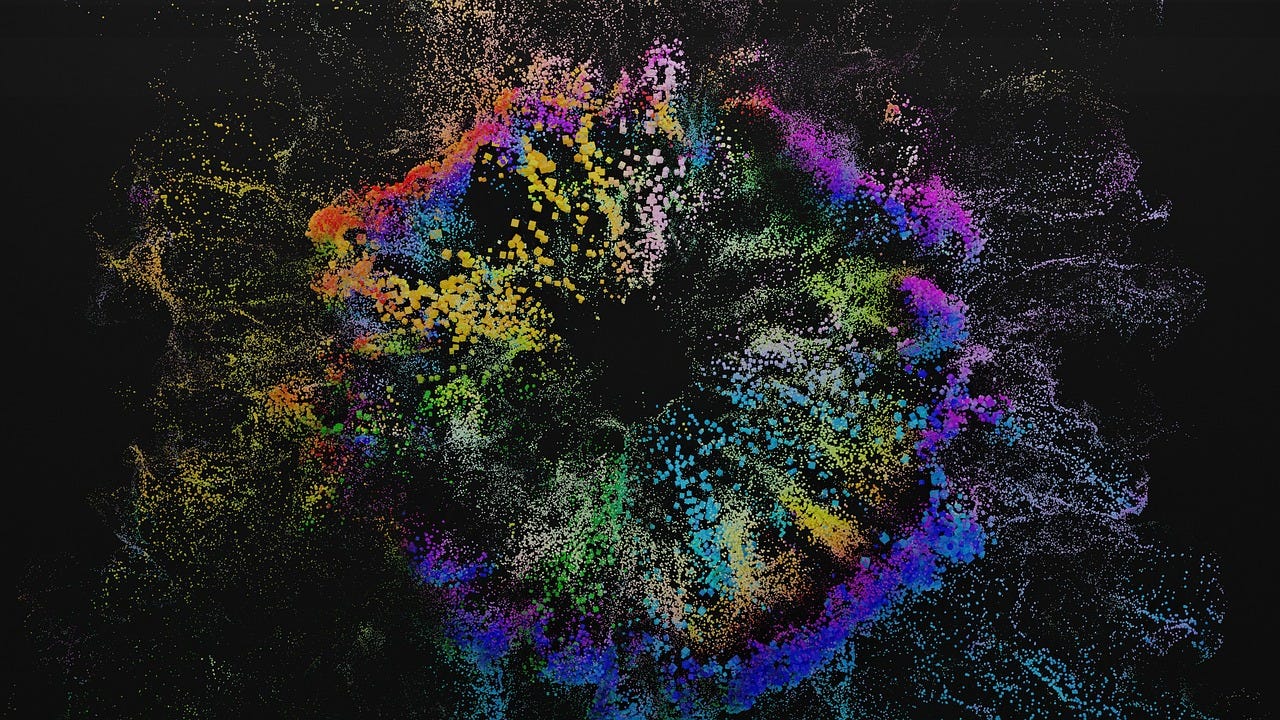On The Nimbus
On those transient moments, atop the currents of wonder, that provoke a deeper participation with reality.
“Nothing can live without wonder. Wonder, perhaps, is the definition of life. The wild flowers stretch toward a sun they can never reach as if enamored of it, and it is when they are closest to that sun, blooming wide and grand, that they are most alive”
- Bernard Voss
Navigating the vast expanse of space and time is no small feat.
Our existence feels like a spin along the slice of a torus loop—a cosmic donut of energy and experience that whirls us around without much regard for any given continuity.
But as we move ‘forward’, we encounter these cresting moments that offer us something more out of our symbiotic agreement with the environment around us.
Consummated from our curious exploration of reality, these moments give us a chance to shift orbits, to act on opportunity, or to just revere the processes that carry us around.
But as many of us happen to observe every once in a while, life seems to be about maximizing the time we spend riding atop the nimbus clouds of possibility rather than about watching them from below - about our ever-improving pursuit of positive outcomes, and the adventures we can have with our own potential.
“I think nature’s imagination is so much greater than man’s, she’s never going to let us relax.”
- Richard Feynman
When wonder takes hold, we seem to move with a graceful propulsion that defies explanation — an organic mode of participating with our environment, harmonious with principles of nature.
Concepts like inertia, entropy, homeostasis, duality and causality - they can all momentarily work with us in such instances.
Wonder can even, somehow through the enigmatic cogs of our consciousness, allow us to defy those principles altogether. Despite entropy, for example, we can pattern and order the nonsensical natural world around us.
Wonder is the spark that ignites these transcendent moments of perfect movement; it’s the catalyst that transforms disciplined effort into effortless discipline and drags outcomes from the spheres of impossibility into those of actuality.
Such instances aren’t mere moments of success—they’re glimpses of an experience that feels like touching the aura of something greater, especially when driven by a desire or intention for meaningful growth.
Ironically, in an age obsessed with optimization trends and self-mastery protocols, an ultimate key to success lies in something as simple as curious observation - in the awe that underpins our movement through life.
“Awe is what moves us forward. It’s the emotion that pushes us past the boundaries of what we know into what we can imagine.”
- Jason Silva
Studies consistently reinforce the idea that the means by which we participate within our environment matter more than the ends; in other words, it’s not the what, it’s the how.
And wonderment has been studied as one mighty effective ‘how’ in achieving some ultra-ordinary feats.
States of wonder and awe have been correlated with expanded perception, reduced activity in the default mode network, and heightened functional connectivity across brain regions.
The idea is that, as our DMN is reduced, the mind enters transient and transcendent states of elevated cognition— a greater sense of connection between itself and its surrounding environment.
Van Elk, Lemmens, & van Asseldonk, in 2022, studied the ways by which awe experiences reduced activity in the DMN and entailed an enhanced functional connectivity between visual, attentional, and salience networks.
Arne Dietrich, via his concept of Transient Hypofrontality, showed that the prefrontal cortex is deactivated during intensive modes of perception - allowing for less inhibited action and thought.
With their Extended Mind Thesis, Andy Clark & David Chalmers had argued that curiosity prompts the extension of consciousness out into the environment, sharpening perception and evolving agency.
And Merleau-Ponty, through his theory of Perception as Participatory, illustrated that our consciousness is actively entangled with the environment, not just passively receptive to it; wonder could thus be seen as a bilateral enlivening and strengthening mechanism of such signals and streams of contact between the perceiver and the world.
“He who can no longer pause to wonder and stand rapt in awe is as good as dead; his eyes are closed.”
- Albert Einstein
Wonder objectifies possibility—it makes the vast abstract potential of the universe tangible enough to act upon by offering a momentary suspension of limitation.
Better put, it offers a disregard of limitation.
It’s not just poetic flourish—it’s an attunement to a different and definitive cognitive-emotional ratio, one that evolution has shaped for discovery, adaptation, survival and, well, meaning
From Joseph Campbell’s concept of the Hero’s Journey to Teilhard’s idea of the Noosphere, the call to adventure and intimate alignment between self, action, and environment is almost as palpable a phenomenon anything—what unfolds is not just performance, but a deepened participation in reality.
Sardonically, we remain awe-struck by spooky subatomic actions at a distance when we ourselves are capable of those very actions.
From riding the nimbus of wonderment, surfing the auras of possibility and touching the crests of potential, we feel how the the ungraspable becomes not only plausible, but natural.
By leaning into the wonderment, we begin to contact the magic of reality, seeing how we can more effectively influence our surrounding world to enlighten the fields of possibility.
“The phenomenal world that all human beings experience is fickle and flexible and also merciless. You often wonder whether you can ride on that fickle and merciless situation or whether it is going to ride on you.”
- Chogyam Tungpa





